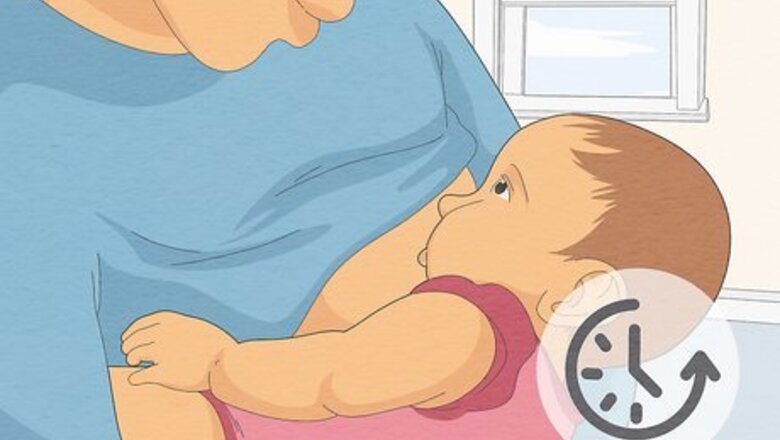
views
- Cluster feeding is when a baby wants several short feeds in quick succession. It's completely normal, but can be tiring for mama.
- Cluster feeding happens during growth spurts, and each spurt only lasts a few days. It's important for your baby to feed whenever they're hungry during this time.
- To reduce cluster feeding, avoid stimulation when your baby fusses so they fall back asleep. You can dim the lights, hold them close, rock them, or listen to soft music.
What is cluster feeding?
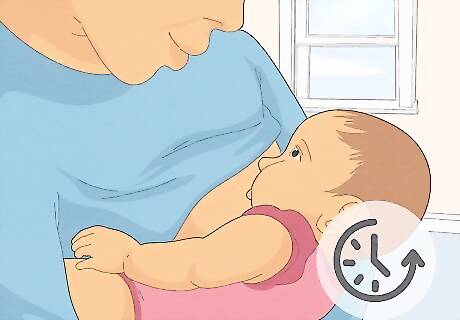
Cluster feeding is when a baby wants several quick feeds in a short time. Cluster feeding is perfectly normal for newborns and often happens in the early days of breastfeeding or when your baby is growing or teething. Your baby may want to cluster feed at any time during the day, but it’s more common in the late afternoon or early evening. You'll know your baby is cluster feeding if they: Feed for a few minutes before pulling off the breast Rest or sleep for brief periods between feedings Cry and get fussy for another feeding after 1-2 hours
How to Cope with Cluster Feeding

Reducing stimulation is the best way to reduce cluster feeding. Hold your baby close or wrap them in a sling to soothe them when they get fussy. Moving around, rocking or swaying them, dimming the lights, swaddling, singing or humming, cooing, and listening to soft music are all great ways to soothe your baby so they’ll fall back asleep without nursing. If your baby doesn’t fall back asleep within 30 minutes and continues to fuss, it’s a sign that they’re hungry—in that case, it’s best to go ahead breastfeed them since these early weeks are crucial for baby's development and growth.
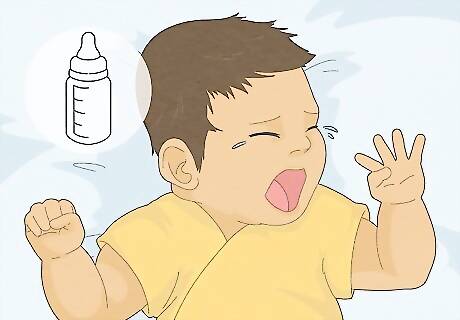
Stick to a daily feeding schedule and encourage afternoon feeding. If your baby eats at regular intervals throughout the day and fills up in the late afternoon, they'll go to sleep with a full tummy and stay asleep longer. Try to avoid afternoon "snacking" (when your baby feeds for just a few minutes and pulls away). Sit with your baby for 30 minutes to an hour and offer your nipple several times until it's clear they're full. During the first few days, a newborn baby typically wants to eat every 1 to 3 hours. Then, in the early weeks and months, feedings will space out a bit and they'll want to feed every 2 to 4 hours. When cluster feeding, your baby may want to feed even more than that (like once an hour). If your baby continues to fuss, look for hunger cues like lip smacking, moving their head from side to side, and moving their hand to their mouth. If you see hunger cues, it's best to go ahead and continue to feed if you can. Try to get comfortable while you're nursing, especially for the longer feeds. The more comfortable you are, the easier it will be for your baby to nurse and get their fill in one sitting. Choose a cozy chair or get settled on the couch before breastfeeding so you can watch a movie or listen to an audiobook.
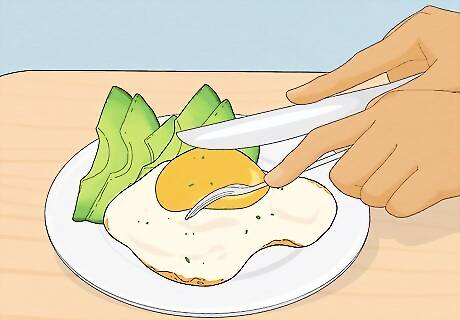
Eat plenty of calories and rest when you can to keep your energy up. Breastfeeding your baby takes a lot of energy, and the last thing you might feel like doing is preparing a meal for yourself. It's important that you don't miss meals, though, because your own health is important (plus, your body uses that fuel to help you produce more milk). Drink plenty of water during the day to stay hydrated, and try to rest in the early part of the day to prepare for your baby's longer afternoon or evening feed. Keep hearty and quick snacks, like nuts and seeds, nearby so they’re easy to grab. It helps to ask your family and partner for support when you need it. If they can't be there in person to help out, they can do things like prepare freezer meals and run errands for you.
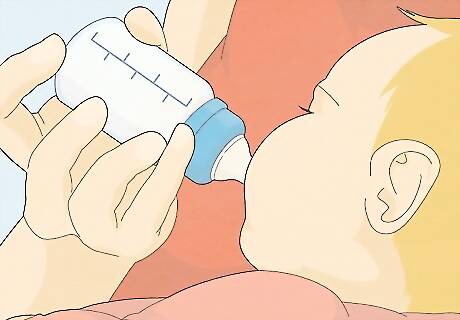
Introduce bottle feeding at 4 weeks old if you need a helping hand. Cluster feeding usually only lasts a few days at a time—although when you’re exhausted, that can feel like a million years! You can introduce a bottle starting at 4 weeks (or whenever you're ready). Then, use a breast pump and store your milk. When your baby fusses in the evening, your partner or family members can warm up the milk and help with bottle feedings. If your baby continues to cluster feed well beyond a few days, speak to a lactation consultant for individualized tips based on your situation.
How long does cluster feeding last?
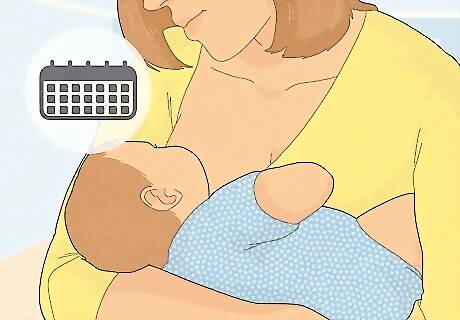
Cluster feeding usually lasts for a few days at a time. Usually, your baby is cluster feeding because they're having a growth spurt, and they'll experience several of those in the early months. The first spurts happen at 3 weeks and 6 weeks, each lasting a few days at a time. Then, they’ll seemingly outgrow cluster feeding, only to briefly start up again at 3 months and 6 months. After 6 months, it’s usually smooth sailing, but your baby may still cluster feed occasionally (like during an illness or an extra growth spurt). You may feel like your supply can't possibly keep up with your baby’s demand, but frequent breastfeeding actually boosts your milk supply. It’s very rare for a mother to run low on milk for her baby, so try not to worry. Experts agree that common "signs" of decreasing breast milk are actually completely normal and resolve quickly on their own (no intervention needed). If your baby isn't gaining weight, or they aren't urinating after feeding and their bowel movements are irregular, they may not be getting enough to eat. If you’re worried, or you just want to make sure everything is okay, talk to a lactation consultant about your feeding routine.
Causes of Cluster Feeding

Growth spurt Your baby may be fueling up to grow, literally overnight! While every newborn is different, it’s pretty normal for a baby to cluster feed at 3 and 6 weeks, then again at 3 and 6 months. Your baby is hungry (and sometimes hangry!) because they’re physically craving the nutrients your breast milk provides so they can develop. Growth spurts usually only last for a few days at a time; it won't be this way forever.

Overstimulation Your baby is still new to this world, but they’ve figured out one thing for sure: breastfeeding and having skin-to-skin contact with you helps them feel relaxed and safe. Your baby’s little nervous system is brand new, so they're essentially experiencing sensory overload just trying to process everything around them. This is perfectly normal, but it can make your baby fussy and anxious (and that's hard on you, too). Doing things like turning down the lights, nursing in a quiet place, and cooing to your baby can help them relax faster. And since cluster feeding tends to happen a lot in the evenings, creating a peaceful environment may help them sleep longer (so you can get some much-needed rest yourself).

Fatigue A tired baby is a fussy baby, and newborns need a lot of sleep! On average, a newborn should sleep 16–18 hours over a 24-hour period—usually 8-9 hours during the day and 8-9 hours during the night. They tend to wake up about every 30 minutes to feed, and if they aren’t able to fall back asleep soon after, they may fuss for a feeding simply because your breast milk soothes them. Make sure your newborn is getting in several good naps throughout the day. Most babies start sleeping through the night (for 5 to 6 hours without waking) at 8 to 12 weeks, but every baby is different. They still may wake during the night during their growth spurts, though. As your baby gets older, they’ll start sleeping more (and for longer) during the night, and spend more time awake during the daytime.




















Comments
0 comment